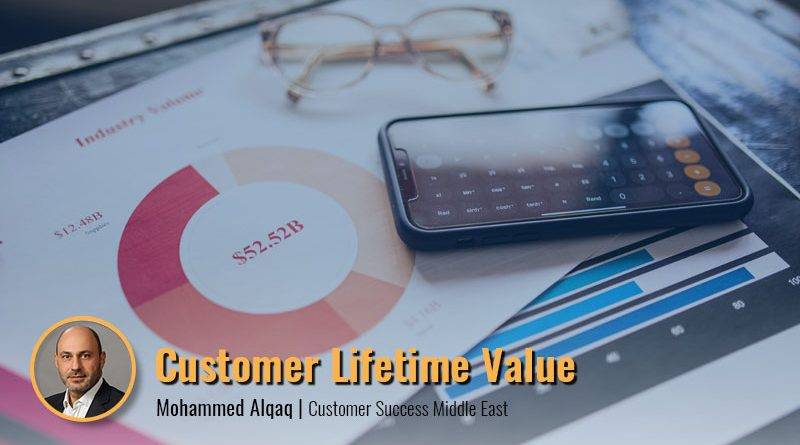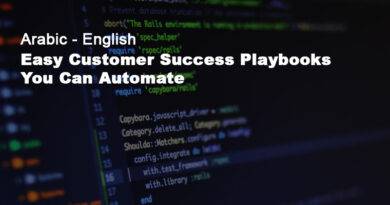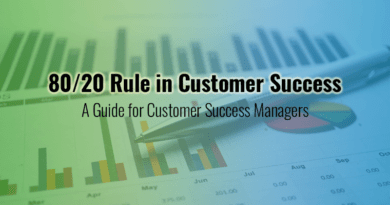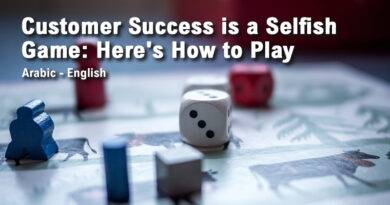Understanding Customer Lifetime Value – CLV
Understanding Customer Lifetime Value (CLV)
By: Mohammed Alqaq
In today’s highly competitive business environment, understanding your customers and their value to your business is of paramount importance. One crucial metric that has gained significant attention in this context is the Customer Lifetime Value (CLV).
CLV is a measurement of the total worth of a customer to a business over the entire length of their relationship. This metric has gained prominence because retaining existing customers is typically less expensive than acquiring new ones. Thus, enhancing the value of your existing customers is a potent strategy for driving business growth.
Table of Contents
What is Customer Lifetime Value (CLV)?
CLV is a metric that quantifies the total revenue a business can reasonably expect from a single customer account. It considers a customer’s revenue value and compares that number to the company’s predicted customer lifespan. Businesses, therefore, use this metric to identify significant customer segments that are the most valuable to the company.
This measure is critical for any business interested in customer growth and increased revenue. By fostering robust relationships with customers, businesses can not only retain them but also boost the value that each customer contributes to the organization.
In essence, increasing the CLV of existing customers is a cost-effective method for driving growth, since retaining customers is typically less expensive than acquiring new ones. Consequently, businesses that prioritize enhancing customer satisfaction and engagement are more likely to thrive in the long term.
"Customer lifetime value (CLV) is the present value of the future (net) cash flows associated with a particular customer."
~ Peter Fader, Professor of Marketing, Wharton University
Why is it important?
CLV can help businesses optimize their marketing and sales strategies. By understanding the value each customer brings to the organization, businesses can devise targeted marketing campaigns and sales strategies to attract and retain high-value customers. This practice can help businesses lower their customer acquisition costs and improve overall profitability.
Another benefit of focusing on CLV is that it can help businesses identify areas where they can enhance customer satisfaction and loyalty. By analyzing customer data, businesses can discern patterns in customer behavior and preferences. They can then adapt their products and services to meet these needs, thus fostering strong relationships with their customers, leading to increased sales and customer loyalty.
Moreover, tracking CLV can assist businesses in making more informed decisions about resource allocation. By understanding the value that each customer brings to the organization, businesses can allocate resources more effectively to retain high-value customers and attract new ones. This practice can help businesses make more informed decisions about where to invest their time and money to achieve the highest return on investment.
Calculating CLV: A Closer Look
To calculate CLV, businesses need to consider multiple factors, including the cost of acquiring new customers, the average transaction value, and the frequency and duration of customer purchases. By analyzing this data, businesses can determine the lifetime value of each customer and develop strategies to increase it over time.
The total worth to a business of a customer over the whole period of their relationship. It’s calculated by the formula:
CLV = Average purchase value * Purchase frequency * Customer lifespan.
CLV Calculation Examples and Their Impact on a SaaS Business
Example 1: A SaaS company offers a project management tool at $20 per month. The average customer stays subscribed for three years. The CLV for these customers would be $20 * 12 * 3 = $720. Knowing this, the company can determine how much they’re willing to spend on acquiring new customers. If the cost of acquisition surpasses a certain threshold, say $200, it may not be profitable for the company.
Example 2: Another SaaS company provides a customer relationship management (CRM) solution at $100 per month, and the average customer stays subscribed for five years. The CLV for these customers would be $100 * 12 * 5 = $6,000. With this insight, the company can strategize their customer retention efforts. For instance, they might decide to invest in a customer success team to proactively manage accounts and increase customer satisfaction, thereby extending the average customer lifespan and increasing the CLV.
Example 3: A SaaS company offers a digital marketing tool at $50 per month, and the average customer stays subscribed for two years. The CLV for these customers would be $50 * 12 * 2 = $1,200. Understanding their CLV, the company could decide to introduce a referral program, where existing customers receive a discount for referring new customers. This strategy could help in both acquiring new customers at a lower cost and increasing the lifespan of existing customers, ultimately raising the CLV.
Leveraging CLV for Business Growth
Understanding the CLV can aid businesses in several ways. It can help determine the budget allocation for customer acquisition and retention strategies. If the CLV is high, businesses might decide to invest more in customer acquisition campaigns, as the return on investment is expected to be substantial. Conversely, if the CLV is low, companies might need to reassess their customer retention strategies and work towards increasing customer satisfaction and loyalty.
The CLV results can guide the pricing strategies. If a customer’s lifetime value is significantly higher than the cost of the product or service, businesses may consider adjusting their pricing models, offering premium versions, or introducing upselling and cross-selling opportunities.
CLV can inform the product development process. If certain products or services have a higher CLV, businesses might consider focusing more on their development and promotion. Alternatively, if some products have a lower CLV, it might indicate the need for improvement or even discontinuation.
CLV can aid in forecasting and financial planning. By understanding the projected revenue from a customer over their lifetime, businesses can make more accurate predictions about their future income, helping to shape their financial strategies and goals.
Enhancing the Value of CLV
To maximize the value of CLV, businesses need to adopt a holistic approach to customer engagement. This means focusing not only on the quality of products and services but also on enhancing the overall customer experience. By providing exceptional customer service, businesses can build strong relationships with their customers, resulting in a loyal customer base that is more likely to refer their friends and family to the business. This practice can help businesses expand their customer base and increase their revenue over time.
Strategies for Improving CLV
Improving CLV is not a one-time effort; it’s a continuous process that requires strategic planning and execution. Here are a few strategies that businesses can consider:
Focus on customer experience.
In the digital age, customers not only expect high-quality products or services but also a seamless and engaging experience. Ensure your customer service is top-notch, your website is user-friendly, and your brand communicates a story that resonates with your customers. Leveraging technology like CRM systems, AI, and data analytics can help you personalize the customer experience, making it more satisfying and likely to increase CLV.
Understand that CLV is not just about driving repeat business.
It’s about transforming one-time buyers into loyal customers who advocate for your brand. Implementing a robust customer loyalty program can be a powerful way to do this. Reward your customers with exclusive deals, discounts, or points for their continued patronage. It increases customer retention and encourages more frequent purchases, thereby enhancing CLV.
Up-selling and cross-selling are effective strategies for increasing CLV.
By offering customers premium products, additional services, or complementary items, you not only increase the transaction’s immediate value but also show customers the breadth of your offerings. Customers who see more value in each transaction are likely to stay longer and contribute more to your business over time.
Another best practice is to use data analysis to understand your customers better. Analyze your customer data to identify patterns, trends, and segments. Which customers are most profitable? What characteristics do they share? Use this information to target similar customers and tailor your offerings to meet their needs and preferences.
Never underestimate the power of exceptional customer service in enhancing CLV. Customers who feel valued and appreciated are more likely to stick around. Train your customer service team to handle customer interactions efficiently and with a positive, helpful attitude. Ensure they have the tools and information needed to resolve issues promptly.
Enhancing CLV is a long-term investment that requires continuous effort and strategic planning. By focusing on the customer experience, implementing loyalty programs, leveraging upselling and cross-selling opportunities, utilizing data, and providing exceptional customer service, businesses can significantly increase their Customer Lifetime Value. Remember, a satisfied customer is a loyal customer, and a loyal customer is a profitable customer.
Predicting Changes in CLV
Lastly, it’s critical to identify signs that CLV may decrease. Changes in buying behavior, a drop in product or service usage, or negative feedback are all indicators that a customer’s lifetime value may be at risk. By predicting these signs and acting on them proactively, businesses can mitigate potential losses and turn the situation around.
When a change in buying behavior is observed, such as a customer reducing their usual order quantity or frequency, it could be a sign of waning interest or satisfaction. In this situation, it’s important to reach out to the customer proactively to understand their concerns and potentially address any issues they might be experiencing.
A drop in product or service usage can also suggest a decrease in customer satisfaction or engagement. This situation requires a comprehensive analysis of usage patterns to identify any potential issues with the product or service. Conducting user surveys or personal customer interviews can provide valuable insights into the reasons behind the drop in usage, enabling you to take corrective action.
Negative feedback is another clear signal of potential problems. It’s crucial to handle such feedback constructively, using it as an opportunity to improve. Encourage open communication and reassure customers that their feedback is valued and that steps are being taken to address their concerns.
Reacting proactively to these signs can help in retaining customers and maintaining or increasing their CLV. Remember, the goal is not just to win back the customer’s business, but also to regain their trust and loyalty.
Understanding and applying the concept of CLV can help a company to create a customer-focused strategy that increases profitability. It is a powerful tool that, when used correctly, can significantly impact a business’s success, drive growth, and increase profitability
Author

Mohammed Alqaq
The Founder of Customer Success Middle. Customer Success Leader. Mohammed has been instrumental in helping professionals realize value and achieve their desired outcomes through an extraordinary success journey. Throughout his 18-year journey in customer-facing roles, Mohammed has had the privilege of managing international teams and fostering exceptional relationships with customers worldwide. In 2023, he was honored to be recognized as one of the ‘Top 100 Customer Success Strategists,’ and was nominated as one of the ‘Most Creative Customer Success Leaders in 2023 & 2024.’ These recognition's represent not only personal milestones but also a testament to his dedication to redefining customer success. His journey in this field is not just about achieving results, but also about creating meaningful, long-lasting experiences that drive business growth.
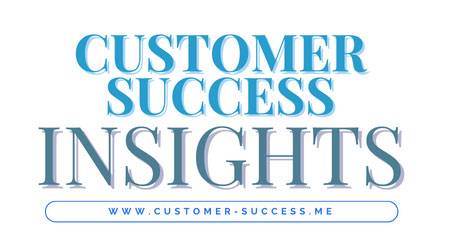
Stay ahead of the game.
Sign up to the newsletter.
Get all the hottest customer success conversations and talking points landing in your inbox once a month, every month.

